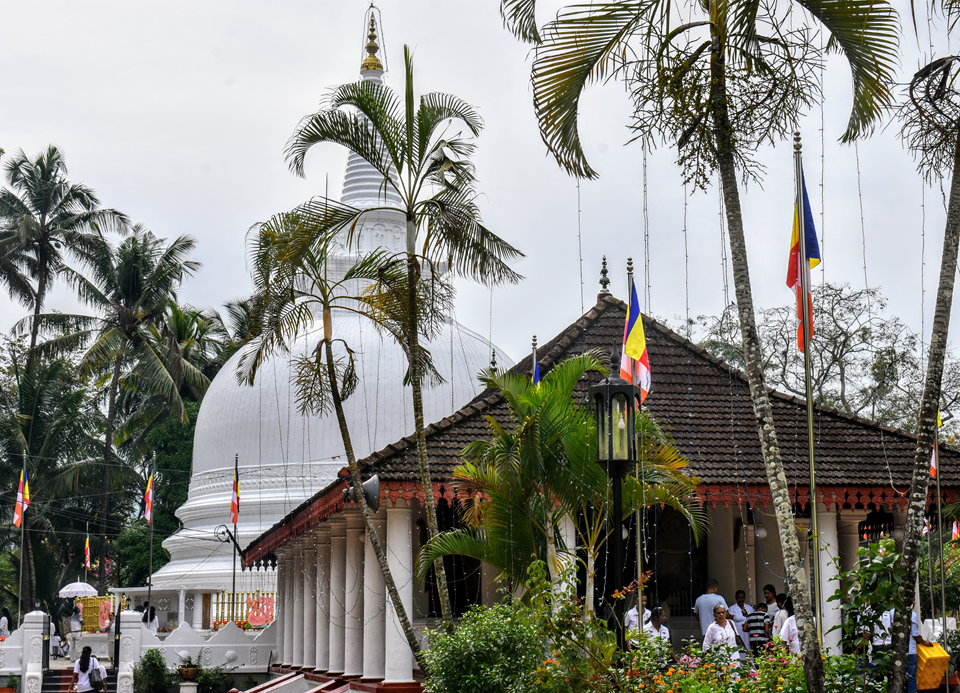
The Magnificant Muthiyangana Raja Maha Vihara
The temple in Badulla, Sri Lanka, is an important pilgrimage site for Buddhists, a place for worship and contemplation. It is believed to have been built over 2,500 years ago after the Buddha visited Badulla at the invitation of a local chieftain, Indaka.
As the Buddha delivered a sermon, beads of perspiration dropped to the ground, transforming into pearls and inspiring the temple’s name. Muthu means pearl (raja means king, maha means great, and vihara means temple). The temple is counted as one of the 16 solosmasthana, places in Sri Lanka honored by visits from the Buddha.
Indaka wanted something to commemorate the visit, so the Buddha is said to have given him a few strands of his hair and the pearls. Indaka enshrined these relics in the stupa.
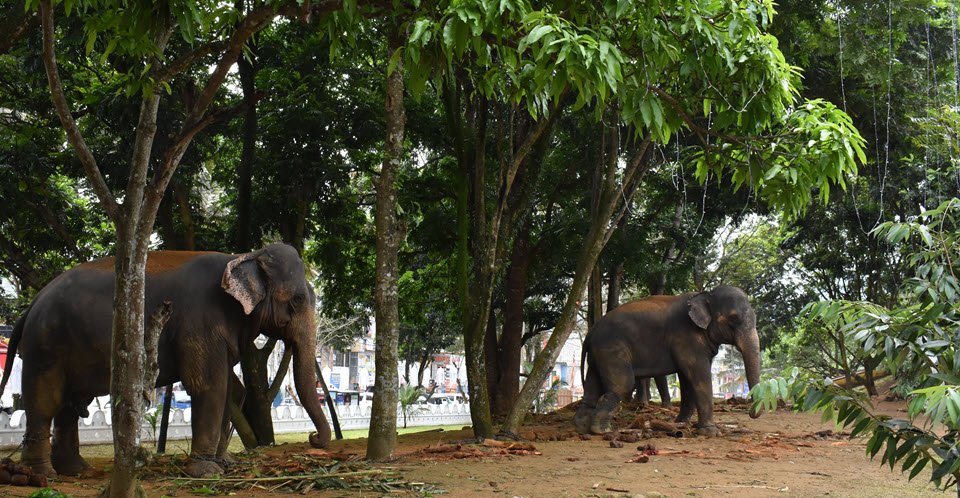
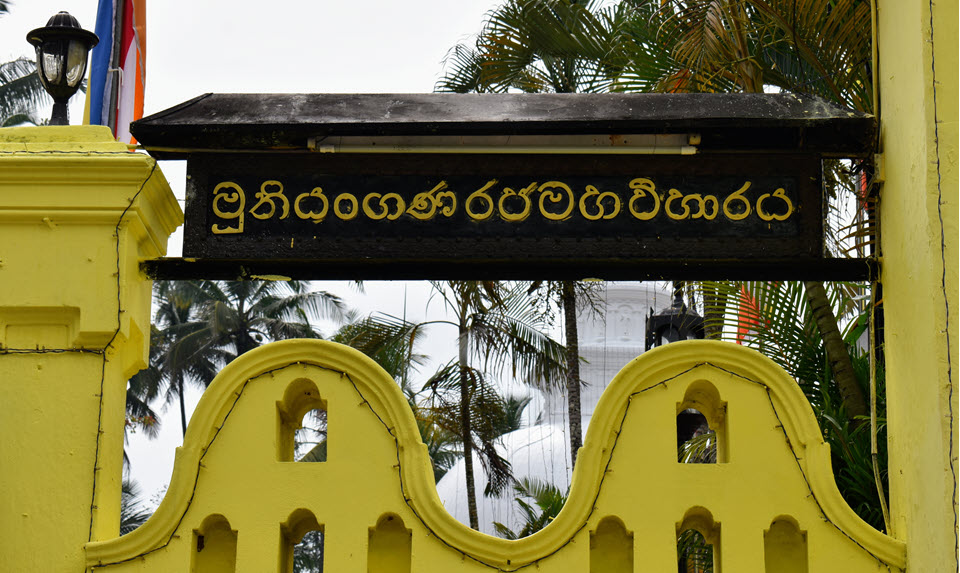
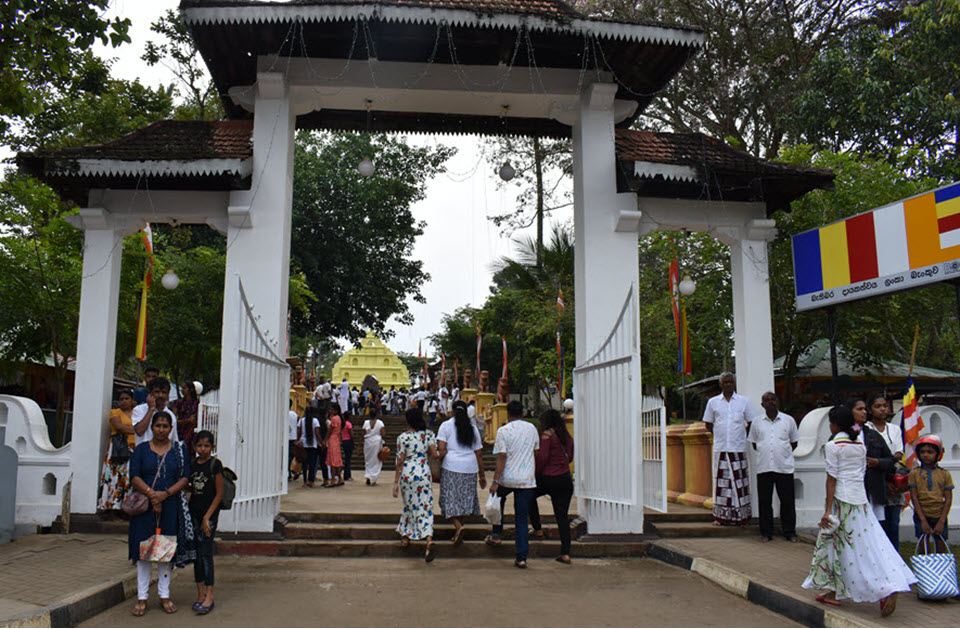
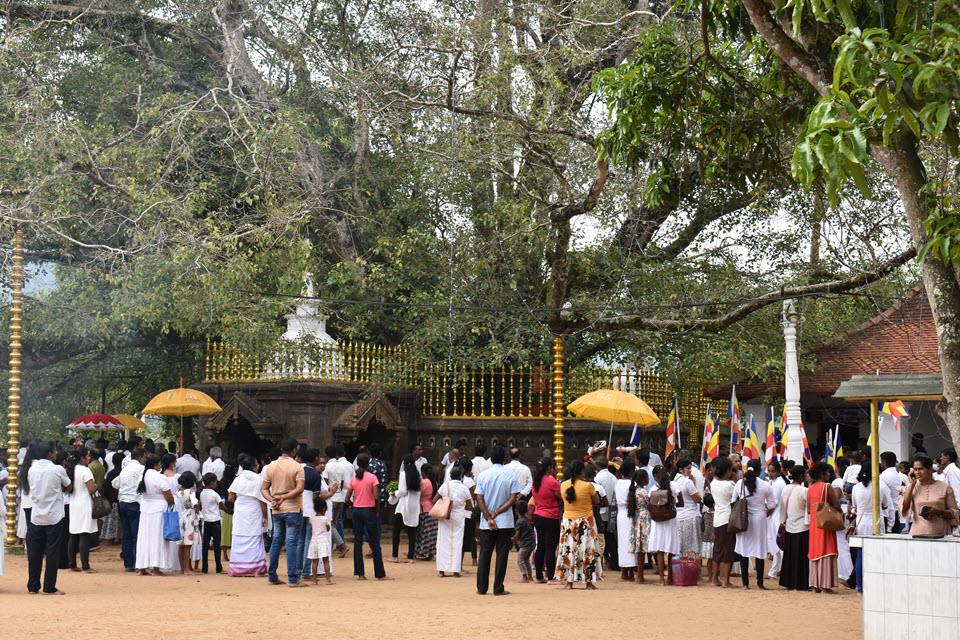
In Sri Lanka, a temple includes outdoor space and several buildings. Muthiyangana has a thorana (entranceway), a main image house with its entrance (makara thorana), a center image house, a temple or meditation hall (viharaya), a stupa, statues, and Bo trees.
The thorana has six levels. The first level is the entranceway. Each of the other levels contains figures: a makara or dragon head, guard figures and lions on the second level, vamana, figures perhaps representing gods and lions on the third level, two decorated bulls on the fourth level, a statue of Buddha on the fifth level, and peacocks on the sixth level. There is a high stand that goes from the third to fourth levels.
Image houses hold statues and other relics of cultural significance. The image house just past the entrance has statues of Bodhisattva and Indaka, now the protector of the Muthiayangan holy ground.
The meditation hosts the image of Buddha, the object of concentration and veneration.
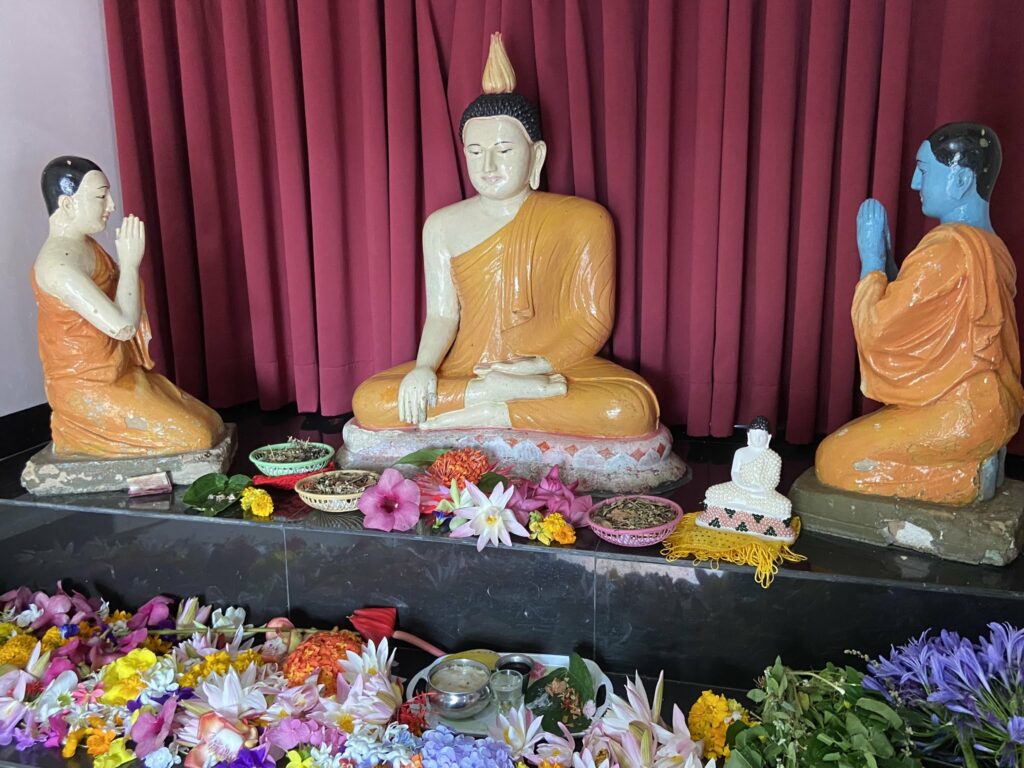
Past the image house is the stupa, the heart of the temple. It is a hemispherical structure containing the relics placed there by Indaka. Stupas have a pradakhshina around them, and walking this path is an important Buddhist ritual.
The stupa honors Buddha, and its shape represents the body of the Buddha, crowned and sitting in meditation posture on a lion throne.
There are four Bo trees (Bodhi) remaining in the temple. These sacred trees are believed to be descendants of the fig tree beneath which Buddha was said to have attained enlightenment.
Muthiyangana is more than just a place for contemplation. It is a museum with artifacts and displays. It is the setting for a number of celebrations throughout the year, such as the celebration of the first tea harvest in the spring, and the annual Muthiyangana Perahera, a grand pageant in August. A celebration may wind through the streets and involve elephants, dancers, musicians, and monks in their saffron robes. There may also be fireworks and items for sale, such as native delicacies, souvenirs, and handicrafts.
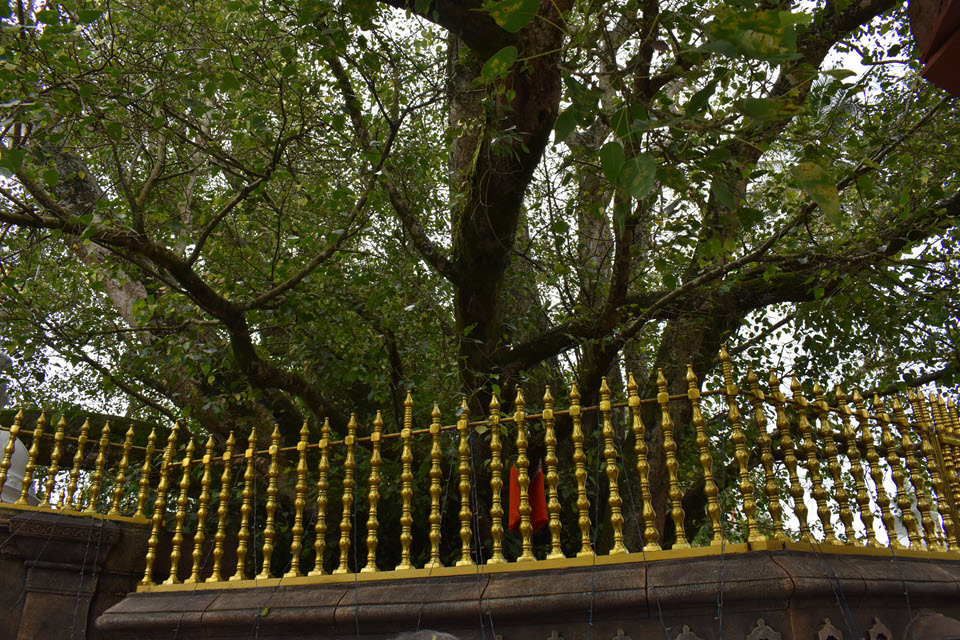
References
Muthiyangana Raja Maha Vihara (Wikipedia)
Muthiyangana Raja Maha Vihara (Lakpura)
Muthiyangana Raja Maha Vihara (TripAdvisor)
Muthiyanagana Raja Maha Vihara at Badulla (Amazing Lanka)
The Grandeur of the Lankathilaka Image House (Next Travels)

